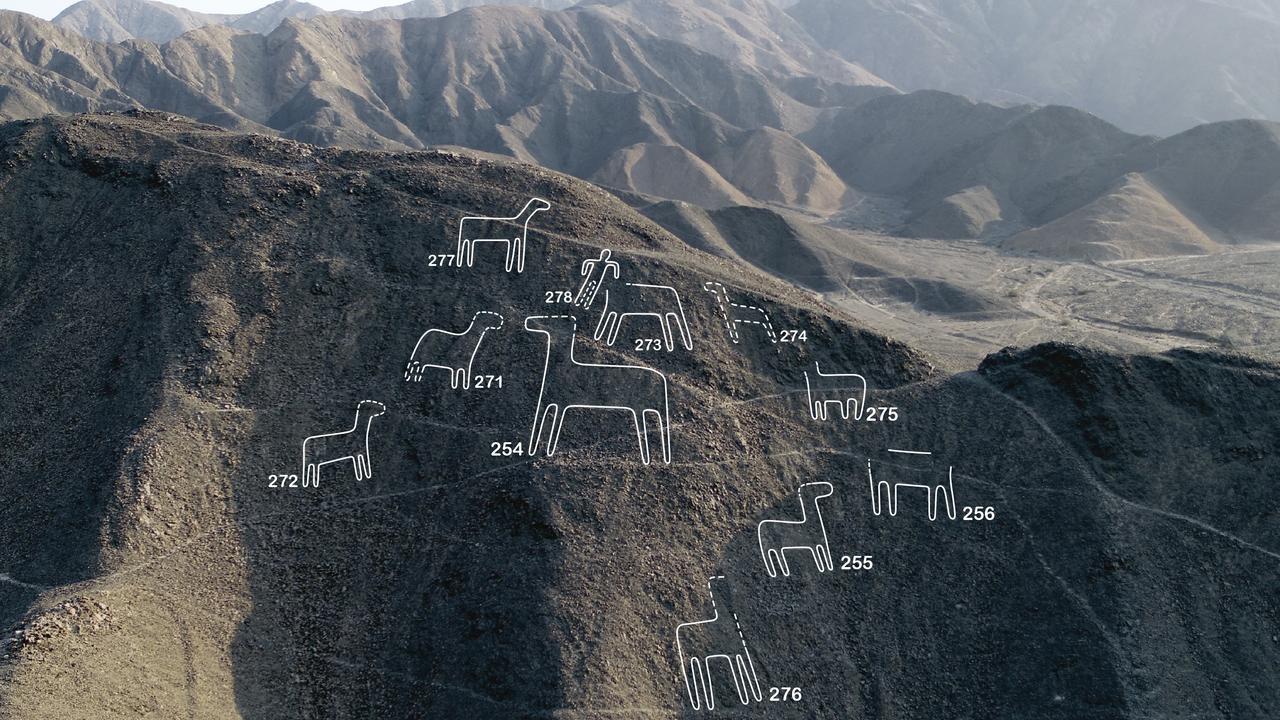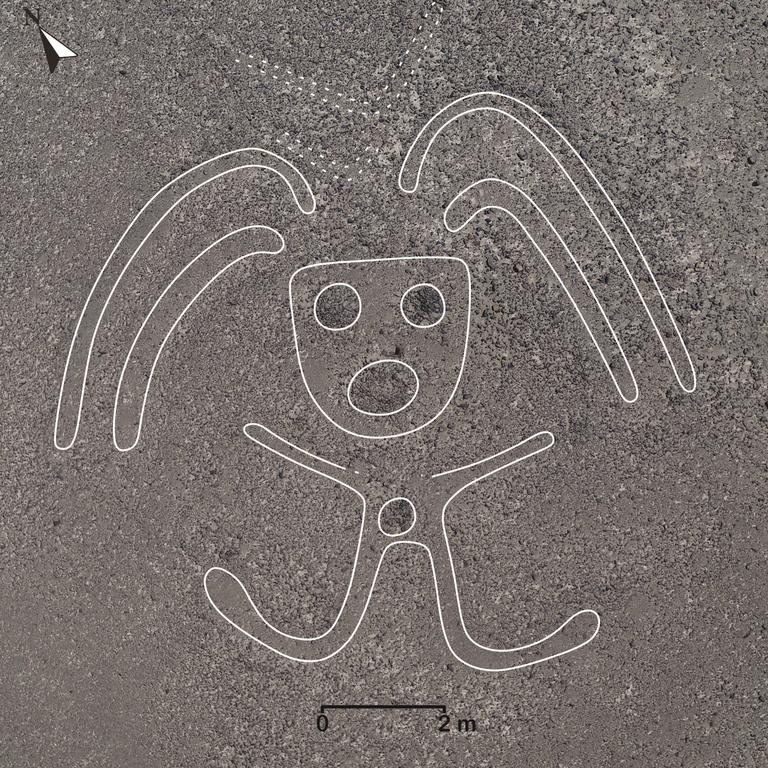Hope new Nazca Lines will shed light on mysterious artworks
Researchers hope the discovery of 168 new designs in Peru’s Nazca desert could provide new insights into the mysterious, ancient artworks

READING LEVEL: GREEN
More than a hundred new designs discovered in and around Peru’s Nazca desert could bring new information to light about the mysterious, ancient artworks.
Peruvian and Japanese researchers from Yamagata University have reported the discovery of 168 new designs at the UNESCO World Heritage site on Peru’s southern Pacific coast following two years of field surveys with aerial photos and drones.
The geoglyphs*, huge figures carved into the South American desert, date back more than 2000 years and represent humans, cats, snakes, killer whales, birds and native camalids, which are animals such as llamas and alpacas.


The new finds add to the 190 figures discovered in the area, about a three-hour drive from Peru’s capital city of Lima, since 2004.
They were thought to have been drawn into the ground thousands of years ago by inhabitants* who removed black stones from the ground’s surface to expose the white sand below to create their designs, now known as the Nazca Lines.
“They are the most outstanding group of geoglyphs anywhere in the world and are unmatched in its extent*, magnitude*, quantity, size, diversity* and ancient tradition to any similar work in the world,” according to UNESCO.

The purpose of the Nazca Lines remains a mystery. Most of the earlier discoveries can only be seen from the air. The new findings, however, are smaller and can be seen from the ground, according to study leader Professor Masato Sakai, from Yamagata University in Japan. They average between 2m and 6m long.

But the vastness* of the terrain they cover – a 450sq km area – has made it difficult to study and conserve the heritage site.
Studies by Yamagata University, in collaboration* with Peru’s government, have helped describe the area in detail and protect it from the threat of urban* and economic development, such as mining.
GLOSSARY
- geoglyphs: large designs or drawings created on the surface of the earth
- inhabitants: people who live in a particular place or area
- extent: how large, important or serious something is
- magnitude: the large size or importance of something
- diversity: having many different types
- vastness: the quality of being great in size
- terrain: an area of land or the type of land
- conserve: protect from harm
- collaboration: the action of working with someone
- urban: to do with a town or city
EXTRA READING
2000-year-old cat found carved in desert
QUICK QUIZ
- How many new Nazca Lines designs have been found?
- How many years are the geoglyphs thought to date back?
- How are they thought to have been drawn into the ground?
- What South American country are the Nazca Lines found in?
- What threat have the studies helped protect the Nazca Lines from?
LISTEN TO THIS STORY
CLASSROOM ACTIVITIES
1. Origin story
In this news article, it states that “the purpose of the Nazca Lines remains a mystery.” Maybe we’ll never know for sure, but we can imagine.
What do you imagine their purpose to be? Who do you think made them? Could it have been one person acting in secret or did many people contribute? Why so many?
Use your imaginings to write a fictional “origins story” that explains the existence of the Nazca lines. Your story can be based on what you think might actually have happened or be completely fantastical.
Time: allow 40 minutes to complete this activity
Curriculum Links: English
2. Extension
If the Nazca Lines were created in 2023, what do you think the drawings would be? Sketch three “modern day” figures in this style.
Time: allow 15 minutes to complete this activity
Curriculum Links: English; Visual Arts
VCOP ACTIVITY
Opener up-level it
Make a list of all the openers in the article. Pick three that repeat and see if you can replace them with another word, or shuffle the order of the sentence to bring a new opener to the front.
Don’t forget to re-read the sentence to make sure it still makes sense, and that it actually sounds better.

